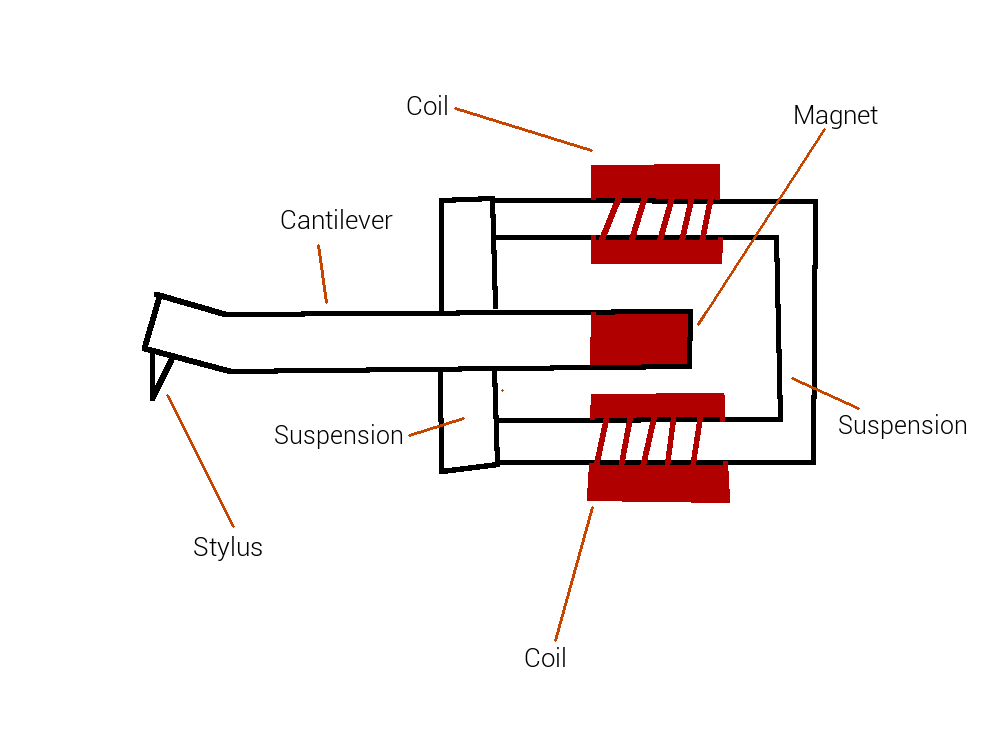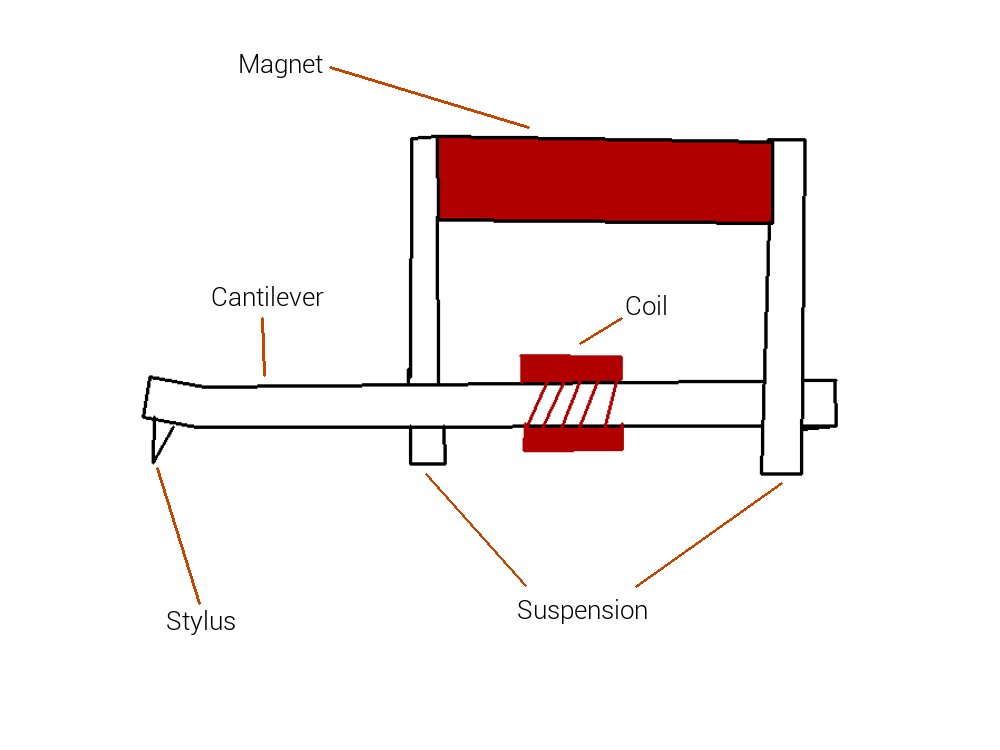![ortofon-2m-black-moving-magnet-cartridge-[3]-1829-p](https://www.hifigear.co.uk/media/magefan_blog/2016/07/ortofon-2m-black-moving-magnet-cartridge-3-1829-p-1024x768.jpg)
A Moving Magnet phono cartridge is comprised of a tiny magnet, located at the end of the cantilever of the stylus that sits between two coils. One coil caters to the left aspect of the music, while the other is for the right - this allows for the stereo sound. This magnet vibrates between the two coils and induces a small electrical current within them in the process. Because the magnet is so small, it needs less tracking/downward force to correctly manoeuvre between the grooves of a vinyl record. A Moving Iron cartridge makes use of essentially the same construction, but swaps the magnet for a tiny piece of iron or other light-weight and ferrous alloy. The iron is lighter and so reduces the necessary tracking force even further.
Moving Magnet is the most common type of phono cartridge, so many integrated amplifiers now feature a Moving Magnet phono stage and many manufacturers, such as Rega and Ortofon design and construct a wide range of MM cartridges with varying levels of quality. While every MM cartridge makes use of this fundamental construction, the way that this is implemented within a cartridge varies as do the materials used, allowing for differing qualities and a unique sound-signature depending on the brand and model.
 Moving Magnet Cartridge design. The Magnet sits between two coils at the end of the cantilever.
Moving Magnet Cartridge design. The Magnet sits between two coils at the end of the cantilever.Moving Coil cartridges feature an inverted version of the Moving Magnet design. Instead of a magnet sitting on the end of the cantilever between two coils, the coils are attached to the cantilever and a magnet is placed near them. Because space within the cartridge at this level is extremely limited, the coils are made from an exceptionally fine wire.
The coils tiny size results in a very low output. While Moving Magnet cartridges tend to offer a more relaxed, warmer sound, Moving Coils are known for offering a better level of detail and a wider stereo field than the Moving Magnet alternatives. Moving Coil Cartridges will often require an external phono-stage specific to their construction.
 Moving Coil Cartridge design. Inverted to MM design, the coil is this time on the cantilever with a magnet located close-by.
Moving Coil Cartridge design. Inverted to MM design, the coil is this time on the cantilever with a magnet located close-by.


